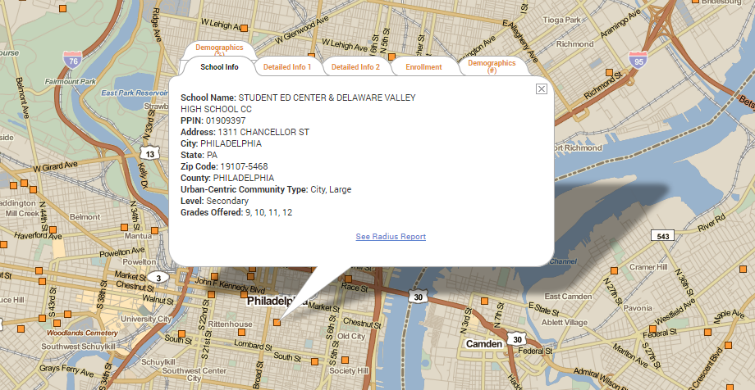What Private School Data Can Tell Us

Having good public schools is the priority for most education policymakers, but private schools also play a role in the educational and social makeup of a community. With extensive private school data from the National Center for Education Statistics, the Private School Universe Survey contains detailed data about private schools previously unavailable on PolicyMap. Data includes: school size, school level, religious orientation, single sex or coeducational, student/teacher ratio, and demographic enrollment information.

In addition to providing information about a given school, this data can be used to map geographic trends. Many religious groups send their children to private school at a higher rate than the general population. Using the Religious Orientation filter, you can see where pockets of certain religious communities exist, such as the Amish:
You can also see patterns in the types of schools. In the Associations filters, you can select all schools that are members of the American Montessori Society:
The data can also be used to locate prekindergarten locations, but keep in mind that it’s not a comprehensive database of early childhood education locations.
The data is current as of the 2009-2010 school year, and will soon be updated with more recent data (as soon as it’s updated by the NCES). The data is free to the public, and is available in the Education menu on PolicyMap.